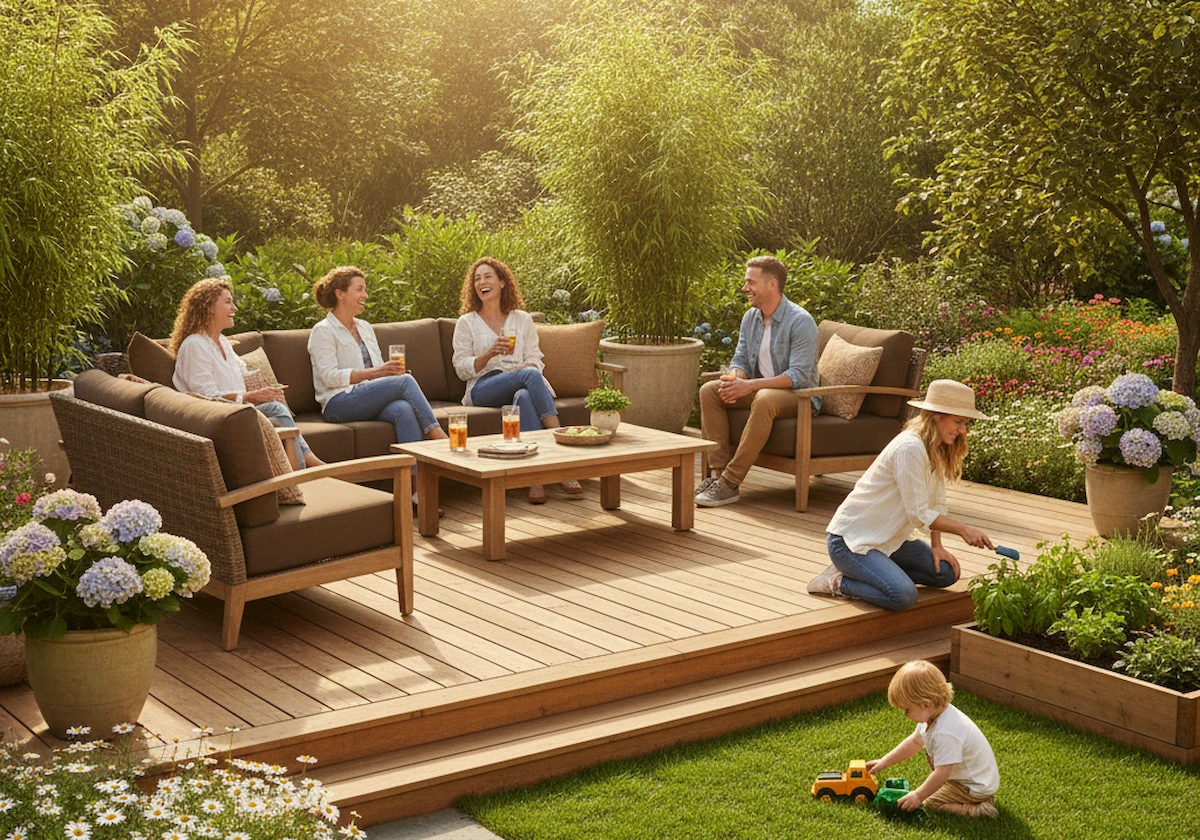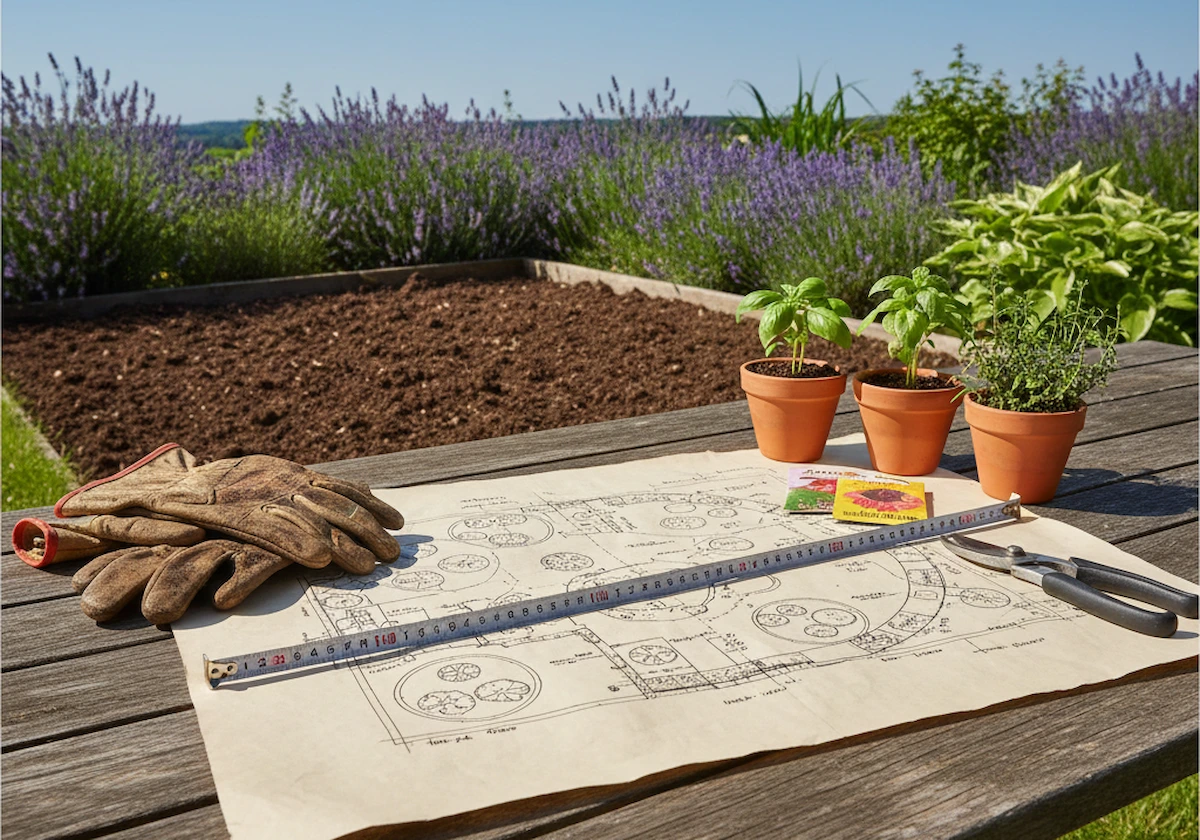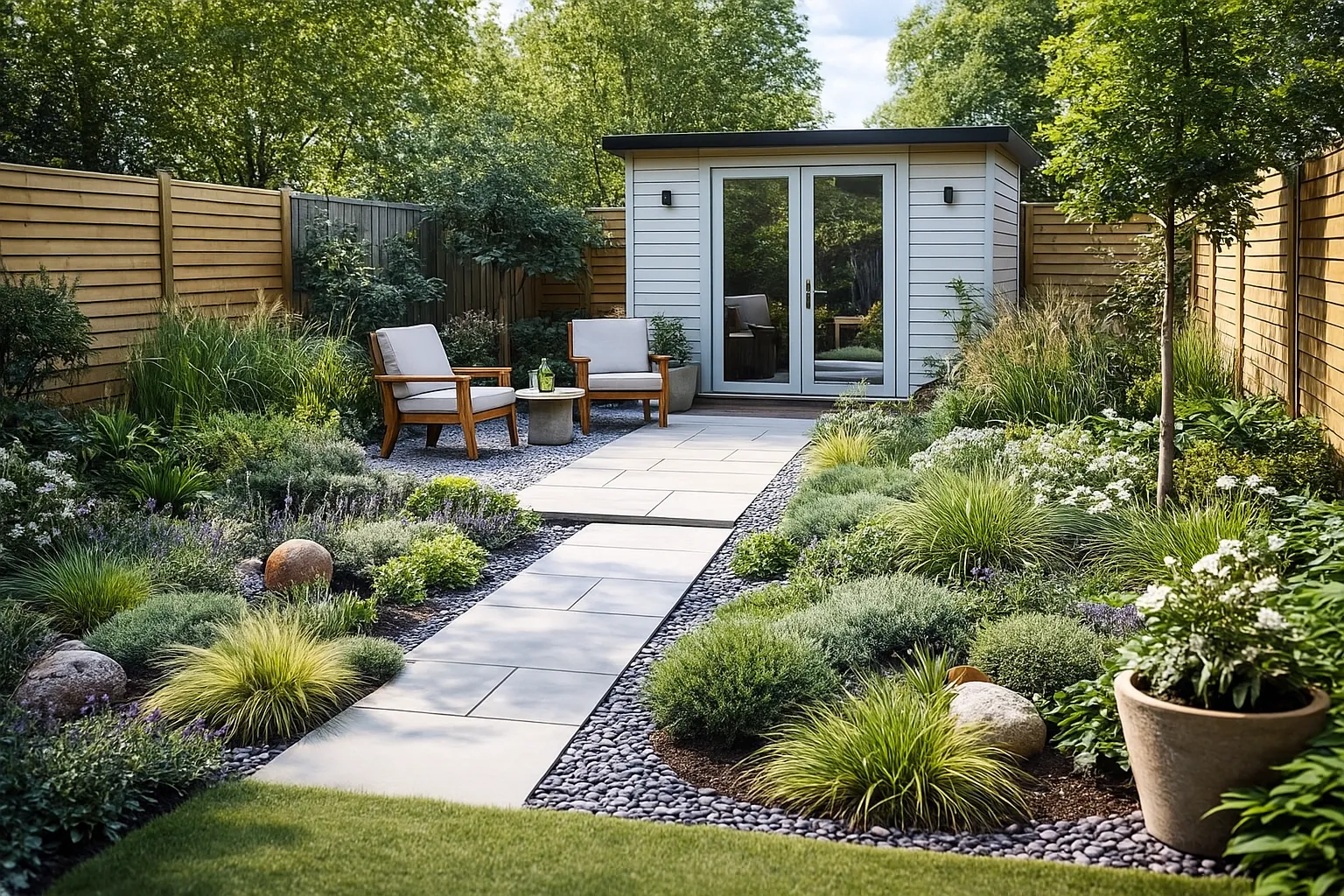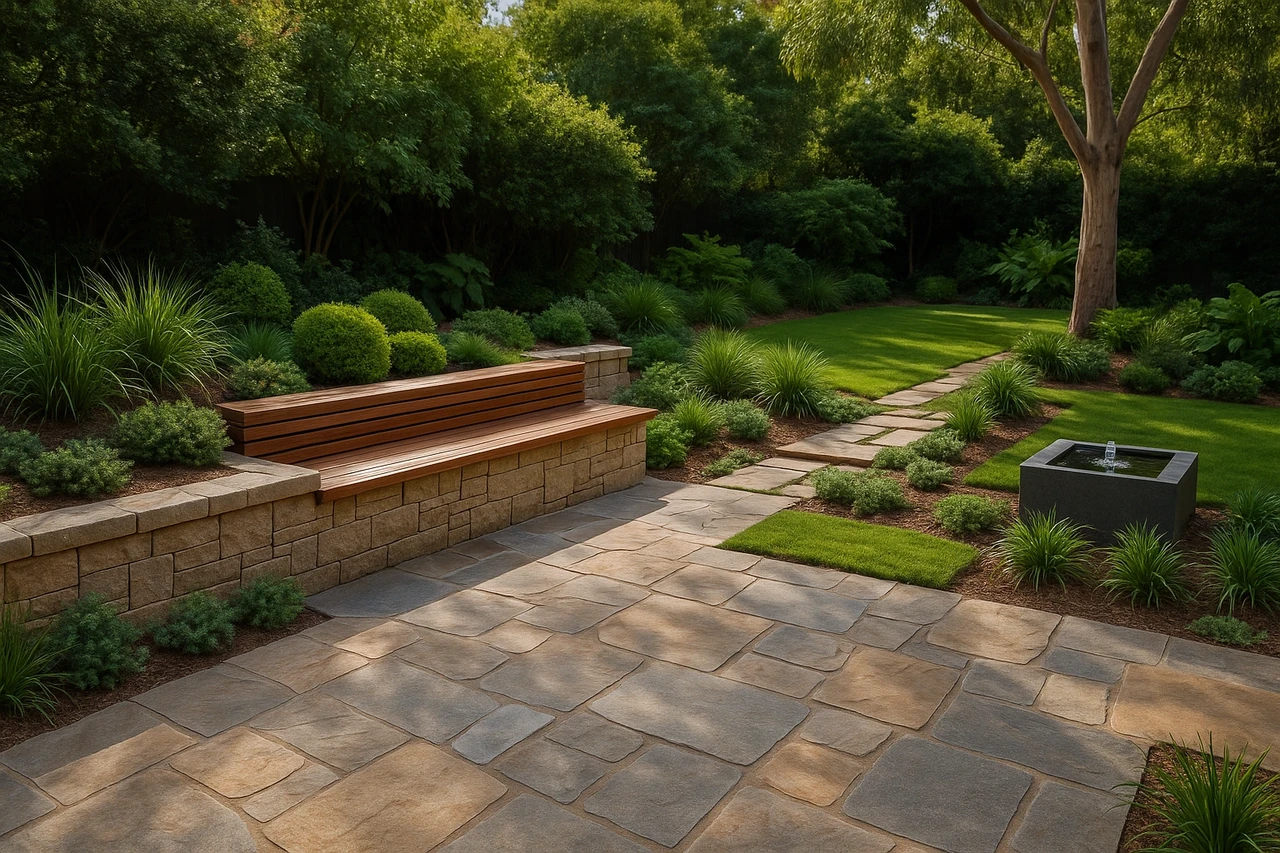Vertical gardens, also known as living walls or green walls, are a revolutionary approach to urban landscaping, allowing plants to grow on vertically suspended surfaces. This innovative method has soared in popularity, particularly in densely built-up areas, where space is at a premium. By maximising vertical space, these gardens create lush, green environments, even in the most compact locations, transforming bare walls into vibrant, living canvases.
Whether installed on the exterior of buildings, within courtyards, or on balconies, vertical gardens provide a unique way to blend nature into urban landscapes, enhancing both visual appeal and environmental quality. Working with professionals, such as engineers and designers, ensures that every aspect of an urban landscaping project is both structurally sound and aesthetically striking.
What is Urban Landscaping?
Urban landscaping is the practice of designing, constructing, and maintaining green spaces in cities to enhance both aesthetic appeal and functionality. It encompasses garden design, paving, retaining walls, green infrastructure, and public spaces, all aimed at creating sustainable, people-friendly environments.
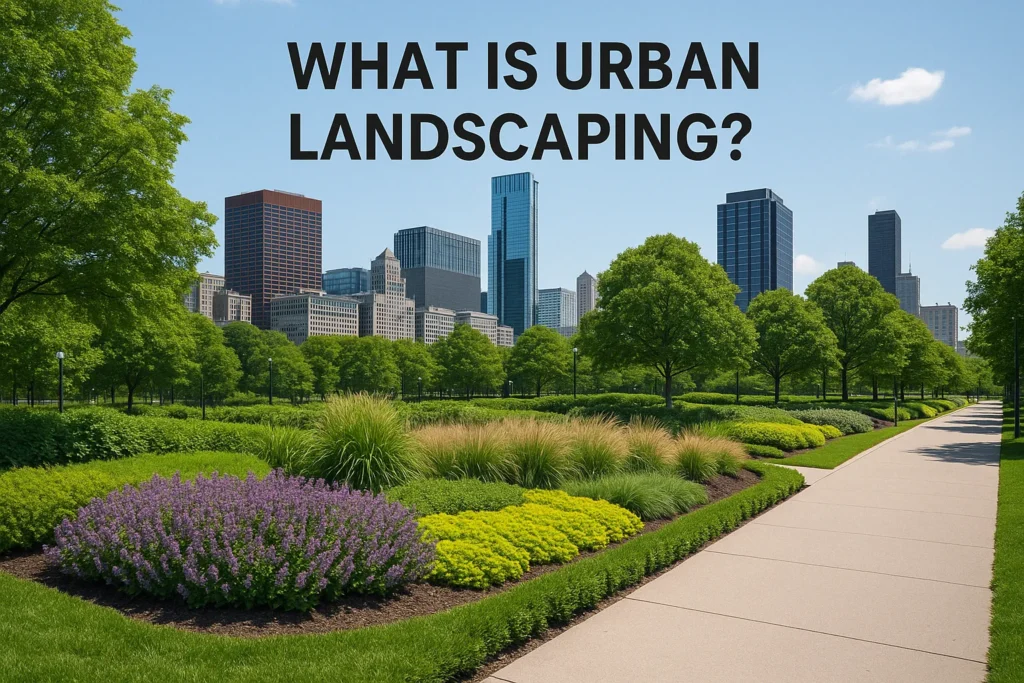
Why It Matters
- Enhances urban living by integrating nature into dense cityscapes.
- Improves air quality by reducing pollution through plant absorption.
- Reduces urban heat by cooling concrete-dominated spaces.
- Creates functional, beautiful spaces that benefit communities and wildlife.
Key Elements of Urban Landscaping
- Public parks & gardens – Green spaces for recreation and relaxation.
- Green walls & rooftops – Utilise vertical and overhead areas for greenery.
- Sustainable hardscaping – Paving, retaining walls, and water features designed with environmental impact in mind.
- Community-driven spaces – Urban farms, shared gardens, and eco-friendly courtyards.
By incorporating these elements, urban landscaping transforms cities into greener, healthier, and more enjoyable places to live.
Urban landscaping involves designing and maintaining green spaces in cities, including garden design, paving, retaining walls, and green infrastructure, to create functional, attractive environments that benefit residents and local ecosystems.
Green Spaces, Elevated: Why Vertical Gardens Matter in Urban Landscaping
Imagine stepping onto your balcony to find a lush vertical garden, with vines cascading from a trellis, herbs within reach, and vibrant bursts of colour from blooming flowers. This isn’t just decoration; it’s a vital escape from the overwhelming urban sprawl, bringing natural beauty into your urban landscaping.
Vertical gardens can be tailored to suit various budgets, making them accessible to a wide range of city dwellers.
As cities grow denser, our connection to nature diminishes. Urban spaces prioritise buildings over greenery, leaving little room for traditional gardens. But vertical gardens offer a solution by bringing greenery back into our lives without consuming valuable ground space. They can be installed on walls, balconies, or fences, making them an ideal addition to small urban apartments and public spaces.
Vertical gardens provide far more than just visual appeal; they enhance mental well-being, strengthen community connections, and improve environmental conditions. As a crucial part of urban landscaping strategies, they contribute to healthier, more liveable cities. This article explores how vertical gardens are shaping the future of urban life.
The Emotional Oasis: How Vertical Gardens Nourish Mental Well-Being
In fast-paced urban environments, stress becomes an inevitable companion. The constant noise, crowded spaces, and lack of natural scenery take a toll on mental health. Studies reveal that exposure to greenery helps lower cortisol levels, the body’s primary stress hormone, thereby improving overall mental well-being.
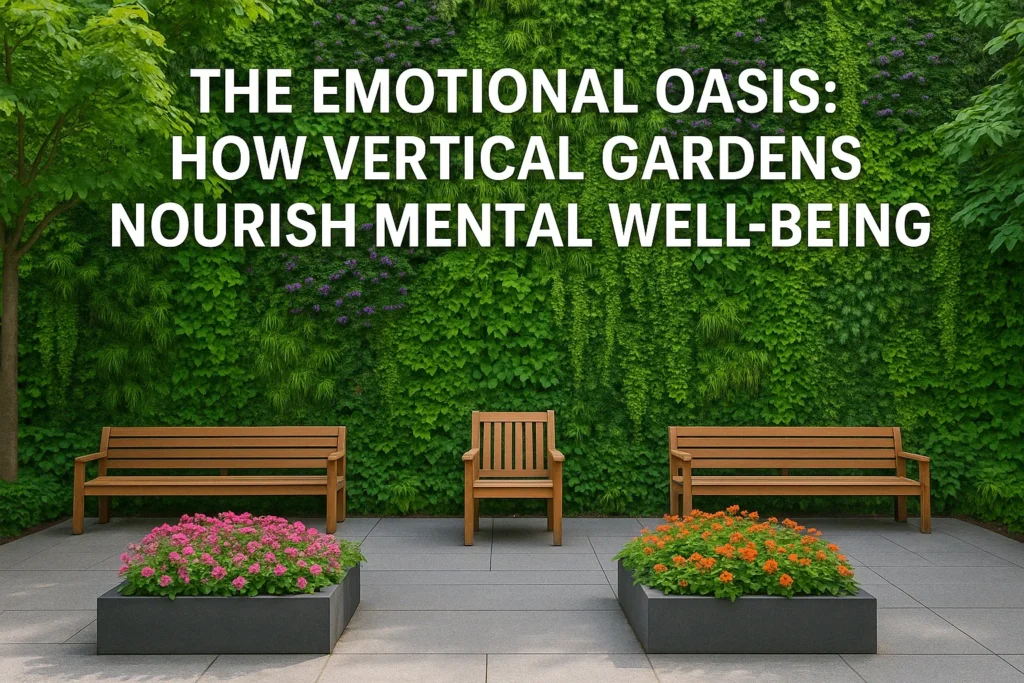
Even in compact spaces, vertical gardens mimic the calming effects of traditional green spaces. Their carefully designed layouts not only enhance aesthetics but also promote relaxation and emotional stability, making them an essential feature of urban landscaping strategies focused on mental health.
Stress Reduction and Mindfulness
Being surrounded by plants encourages mindfulness, the practice of being present in the moment. Whether it’s watering a hanging planter, trimming leaves, or watching new buds unfurl, tending to plants slows down thoughts and fosters relaxation. The gentle, repetitive actions involved in maintaining a vertical garden can have a meditative effect, reducing anxiety and promoting a sense of calm.
Unlike traditional gardens, vertical gardens fit seamlessly into small apartments, making their wellness benefits accessible even to those with limited outdoor space. Their adaptability makes them an ideal addition to urban landscaping projects focused on well-being.
Boosting Mood and Emotional Well-Being
Greenery is widely recognised for reducing symptoms of anxiety and depression. A well-maintained vertical garden can significantly enhance mood and overall emotional well-being.
Research suggests that even brief interactions with plants stimulate the release of endorphins, the body’s natural “feel-good hormones”. The colours and textures of plants create a soothing effect, reducing irritability and building a positive mindset. Vertical gardens bring these benefits into urban living spaces, even for those without access to traditional green spaces, further enriching urban landscaping initiatives.
Creating a Sense of Control in Urban Life
City living can feel overwhelming, with constant exposure to noise, pollution, and restricted personal space. Tending to a vertical garden, no matter its size, provides a sense of control. Watching plants thrive under your care instils a feeling of accomplishment, counteracting the helplessness that often accompanies urban stressors.
Caring for plants not only creates structure and purpose but also allows for creative expression. Customising a vertical garden gives urban dwellers an opportunity to personalise their space, bringing warmth and individuality to an otherwise uniform urban environment. This personal touch enhances the value of urban landscaping, making cities more liveable and engaging.
Beyond Beauty: The Social Power of Green Walls
Beyond their individual benefits, vertical gardens play a crucial role in fostering social connections. In densely populated urban areas, social isolation is a growing concern. Vertical gardens act as communal spaces, bringing people together through a shared appreciation for nature and greenery, enriching urban landscaping projects with a social dimension.
Fostering Community Engagement
In shared spaces, such as apartment complexes, community centres, and public parks, vertical gardens become gathering points. Residents can collaborate on maintenance, share produce, or simply enjoy the greenery together.
Community gardening strengthens social bonds, encouraging interaction between neighbours and fostering a sense of belonging. The collaborative nature of maintaining a vertical garden promotes teamwork and communication, reinforcing community spirit and enhancing urban landscaping initiatives.
Bridging Generational Gaps
Gardening has long been a multigenerational activity, with knowledge passed down through families. Vertical gardens provide a valuable opportunity for younger city dwellers to learn about garden design from older generations.
These spaces encourage people of all ages to come together, exchange gardening tips, and share stories, reinforcing community bonds. Additionally, vertical gardens serve as educational tools, teaching children about plant biology, sustainability, and environmental stewardship. Their role in urban landscaping education programmes makes them a powerful tool for lifelong learning.
The Silent Environmental Heroes: Vertical Gardens’ Impact on Urban Ecosystems
Green walls are far more than aesthetic enhancements; they provide vital environmental benefits. From air purification to habitat creation, vertical gardens work tirelessly to improve urban environments.
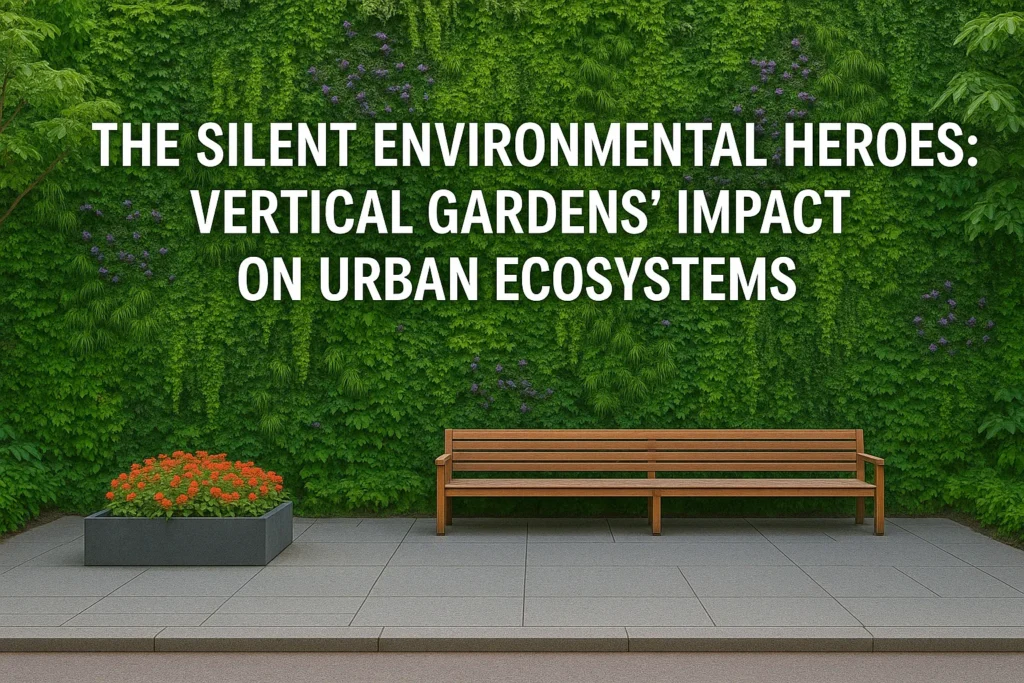
In cities where natural ecosystems are frequently disrupted, these gardens play a crucial role in restoring ecological balance. Their ability to reduce pollution, regulate temperatures, and support biodiversity makes them indispensable in modern urban landscaping.
Air Purification: Nature’s Filter
Cities are pollution hotspots, but plants naturally absorb carbon dioxide and trap airborne pollutants. Vertical gardens enhance urban landscaping by filtering out harmful substances such as nitrogen dioxide, ozone, and particulate matter, significantly improving air quality.
Studies indicate that green walls can reduce airborne particulates by up to 60%, making them an effective solution for combating urban pollution. Cleaner air leads to better respiratory health, lowering the risk of conditions like asthma and bronchitis, reinforcing the environmental value of urban landscaping.
Combating the Urban Heat Island Effect
Urban areas are prone to heat retention, with concrete and asphalt absorbing and radiating warmth, causing the urban heat island effect. Vertical gardens act as natural insulation, reducing building heat absorption and cooling surrounding spaces.
Research suggests that green walls can lower temperatures by up to 4°C, reducing reliance on air conditioning and cutting energy consumption. This natural cooling effect enhances comfort while lowering greenhouse gas emissions, making vertical gardens an essential feature of sustainable urban landscaping.
Supporting Biodiversity in the City
Urban spaces often lack habitats for wildlife, leading to a decline in birds, bees, and butterflies. Vertical gardens counteract this loss by providing essential shelter and food sources, helping to support pollinator populations.
By incorporating a variety of plant species, vertical gardens attract different forms of wildlife, promoting biodiversity in urban environments. These green spaces strengthen ecosystem resilience, enabling cities to recover from environmental stresses while reinforcing the broader ecological benefits of urban landscaping.
Space-Saving Benefits: Maximizing Urban Living
One of the greatest advantages of vertical gardens is their ability to maximise space in densely populated urban areas. By growing plants upwards rather than outwards, these gardens introduce lush greenery while maintaining a minimal footprint, a perfect solution for urban landscaping where every square metre matters.
Beyond saving space, vertical gardens help reduce the urban heat island effect, improve air quality, and support local wildlife habitats. They do more than just beautify city spaces; they enhance the quality of life for urban dwellers by bringing pockets of nature into the concrete jungle.
Designing with Purpose: Urban Landscaping Through Vertical Gardens
Creating a vertical garden is about more than aesthetic appeal; it’s about designing a living, sustainable system that thrives in its environment and enhances urban landscaping efforts. A well-planned vertical garden can serve multiple functions, from purifying the air to providing fresh herbs at your fingertips.
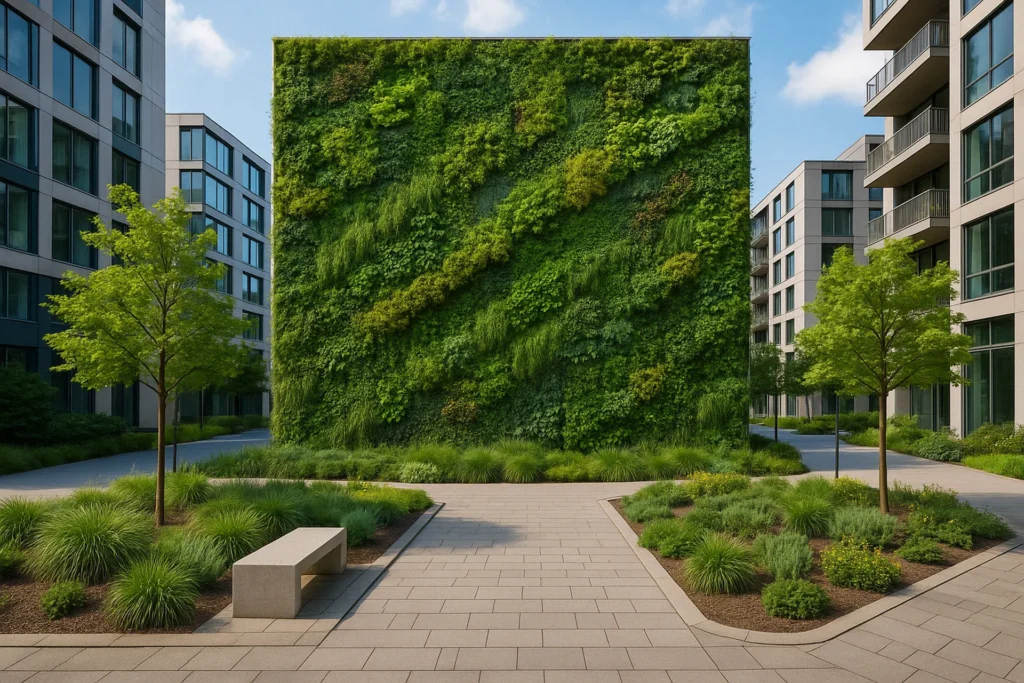
Understanding the purpose of your garden helps in making informed choices about plant selection, structure, and maintenance, ensuring it is both beautiful and beneficial to urban landscaping strategies.
Choosing Plants with Impact
Not all plants are suited for vertical gardening. Selecting the right plants enhances sustainability and supports biodiversity. Prioritise:
- Air-purifying plants – Ferns, pothos, peace lilies.
- Pollinator-friendly plants – Lavender, jasmine, marigolds.
- Edible plants – Herbs (basil, mint, parsley) and leafy greens (spinach, lettuce).
The Importance of Native Species
Incorporating native plants reduces maintenance requirements and supports local ecosystems. Native species are often more resilient, requiring less water and fewer chemical inputs, making them a smart choice for sustainable urban landscaping. They also provide habitats and food sources for local wildlife, reinforcing their environmental benefits.
Sustainable Design Considerations
- Recycled materials – Upcycled pallets, plastic bottles, or old gutters.
- Water-efficient irrigation – Drip systems and self-watering planters.
- Eco-friendly fertilisers – Organic compost and natural plant foods.
Sustainability is at the heart of urban landscaping, ensuring that vertical gardens remain environmentally friendly and efficient.
Landscape Design Principles
Effective urban landscaping follows key design principles to ensure functional and visually appealing spaces. These include:
- Balance & proportion – Achieving harmony between hardscaping and greenery.
- Emphasis & movement – Creating focal points like green walls and directing flow through pathways.
- Unity & contrast – Blending textures and colours for an aesthetically pleasing landscape.
Applying these principles helps create spaces that are both practical and attractive.
Constructing Vertical Gardens
Building a vertical garden starts with choosing a suitable location, such as a wall, fence, or freestanding structure. Plants are selected based on light availability, climate, and aesthetics.
There are multiple design methods, including:
- Hydroponic systems – Delivering a nutrient-rich solution directly to plant roots.
- Trellises & climbing plants – Providing a natural way for plants to grow upwards.
- Wall-mounted planters – Offering a structured and space-efficient solution.
Proper irrigation, nutrient delivery, and support structures ensure long-term success. With careful planning, vertical gardens can transform even the most uninspiring urban spaces into thriving, green environments.
Types of Vertical Gardens: Exploring Varieties and Their Uses
Vertical gardens come in various forms, each suited to different urban spaces and landscaping needs:
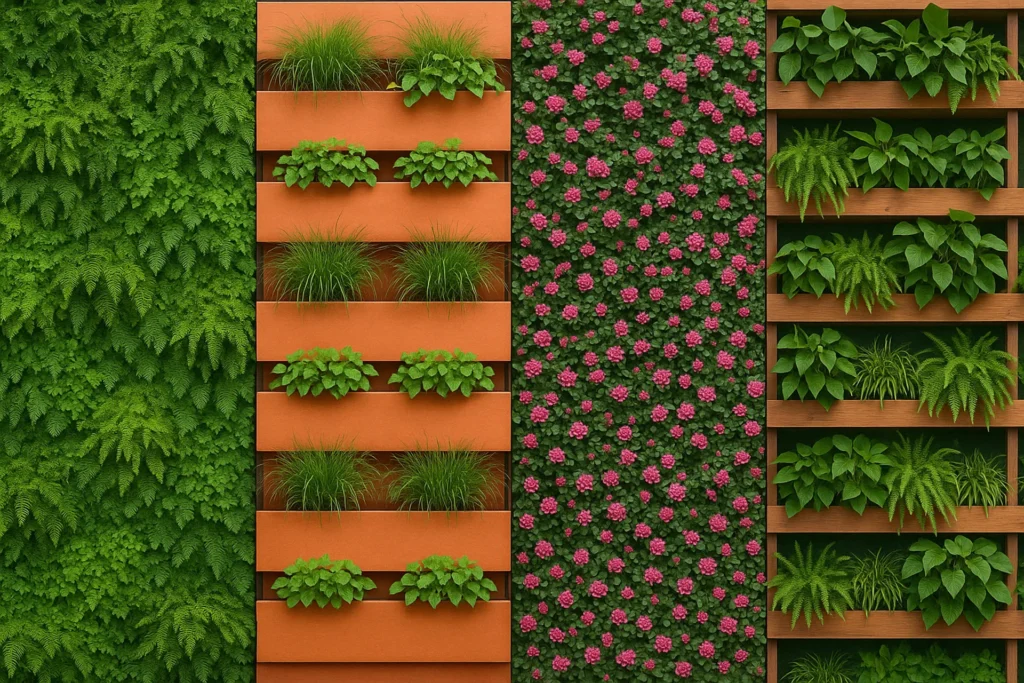
Modular Vertical Gardens – Pre-fabricated systems made up of multiple plant modules. These are easy to install and maintain, making them a popular choice for both residential and commercial urban landscaping projects. They offer flexibility and can be tailored to fit various spaces.
Trellis Vertical Gardens – Designed for smaller spaces, these gardens train plants to climb trellises or support structures. They can be attached to walls or fences, adding privacy and greenery without taking up much ground space. Ideal for green screens and decorative facades.
Hydroponic Vertical Gardens – Instead of soil, these gardens use a nutrient-rich water solution, making them ideal for indoor environments. They provide precise control over plant health and growth, making them especially useful in urban areas with limited soil access.
Maintenance and Upkeep of Vertical Gardens
To keep a vertical garden thriving, regular watering, pruning, and fertilising are essential. Using efficient irrigation systems, such as drip watering, ensures consistent moisture while minimising water waste.
Structural checks help maintain the garden’s stability, preventing damage over time. Monitoring pests and soil health ensures plants remain vibrant and functional for years. With proper upkeep, vertical gardens continue to enhance urban spaces with minimal effort.
The Future Is Vertical
In a world dominated by concrete and steel, vertical gardens represent a brighter, greener future. As interest in sustainable urban landscaping grows, these gardens play an essential role in balancing greenery with modern city living.
More than just aesthetic features, vertical gardens contribute to emotional well-being, community engagement, and environmental resilience. They are a transformative element in sustainable city design, making urban environments healthier, more liveable, and visually appealing.
Ready to transform your urban space?
Visit designmartus.com to explore innovative vertical gardening solutions designed for urban landscaping. Take the first step towards a greener, healthier environment today!




